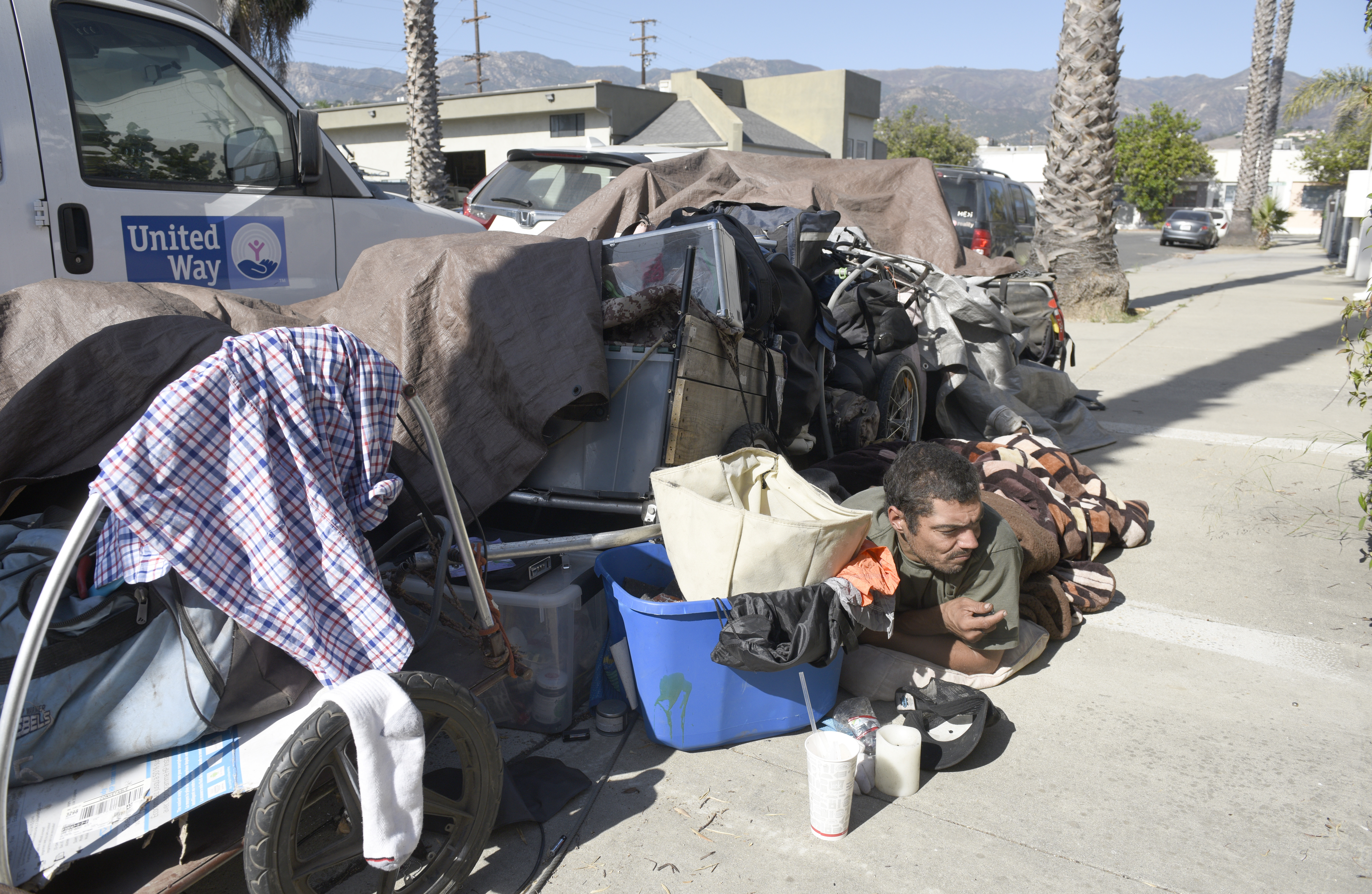City Hall to Impound Homeless People’s Private Property on City Streets
New Ordinance Would Allow Police to Seize Any Belongings Bigger Than a Large Backpack with Four Hours’ Notice

Like every other coastal city in California scrambling to respond to the persistent challenge of chronic homelessness, Santa Barbara now finds itself caught going in opposite directions simultaneously. At the same time City Hall is spending a couple million bucks in state emergency homeless funds to secure better services for the most vulnerable on the street, the City Council’s Ordinance Committee is passing measures that will make life considerably less comfortable for them.
This week, the committee passed a measure that will make it easier for city police to impound personal belongings stored on public sidewalks or other public spaces. The ordinance — if enacted by the council as a whole — will allow police to impound any belongings bigger than a large backpack with four hours’ notice. It will also allow immediate impoundment in areas where warning signs are posted within 50 feet of the personal property.
City Attorney Ariel Calonne suggested areas like the courthouse would be likely candidates for immediate impoundment rules. The city, he said, should have “no tolerance for leaving packages capable of concealing mass-casualty types of weapons.” Councilmember Randy Rowse noted that a couple such packages had been left at City Hall, though with no deadly effect.
Under the ordinance, any impounded property worth $100 or more will be stored up to 90 days at the police station or the public works yard at no charge to the owner. After that, it will be sold or destroyed.
Longtime homeless advocate Peter Marin was outraged by the proposal. Anything impounded from the streets, he predicted, would be worth less than $100. The four hours’ notice, he charged, was meaningless, especially for physically handicapped homeless people forced to find a new place to park themselves and their belongings. “They’ve got no alternative where to store their stuff,” he said.
Calonne took pains to stress that this measure does not criminalize homeless people. Marin, who has frequently crossed swords with Calonne, wasn’t having it. “It’s not an ordinance,” he blasted. “It’s permission to do whatever you want.”
Councilmember Oscar Gutierrez said not one word but voted for the new ordinance. Rowse did too, arguing, “The public right of way is not a storage space” and that the confiscated property might pose a “biohazard” or attract rats. Only Councilmember Kristin Sneddon voted against the measure. “I don’t understand where these people are supposed go or what they’re supposed to do,” she stated. If and when the city created a day center for the homeless, she added, she might be inclined to support such an ordinance.
To date, homeless service providers have conspired to open a “pop-up day center” but for just one day in July. The results were positive: 81 people showed up, and there were no incidents. They are hoping to host another daylong pop-up event sometime this December or January. The hope is to work out any logistical kinks and achieve community buy-in before proposing a more permanent facility. Until that happens, no place will exist where people on the street can secure their belongings. (Mayor Cathy Murillo said afterward she intended to find a suitable storage space.)
Meanwhile, the “housing first” approach to homeless treatment and response care has been blamed for a small but notable uptick in evictions from city Housing Authority properties, such as El Carrillo Apartments, which offer permanent transitional housing. The housing-first model — mandated now for recipients of many federal and state homeless grants — contends the best way to help the most vulnerable is by housing them and bombarding them with services. However, the addition of fresh-from-the-street newcomers unaccustomed to living with others does not always sit well with established tenants.
Last week, Rob Fredericks and Alice Gleghorn, respectively the executive directors of the city Housing Authority and county Department of Behavioral Wellness, met at a public meeting to discuss growing pains induced by this apparent problem. While the Housing Authority stressed the issues leading to a handful of recent eviction are more complex than “housing first,” its representatives stressed the need for more structured supportive housing to handle the array of needs. Both sides agreed that housing alone is not enough; the right kind of services applied with the appropriate frequency is also key. “You need the whole enchilada to have a meal,” said Gleghorn. “You can’t just pull out the meat and say we’ve solved the problem.”



